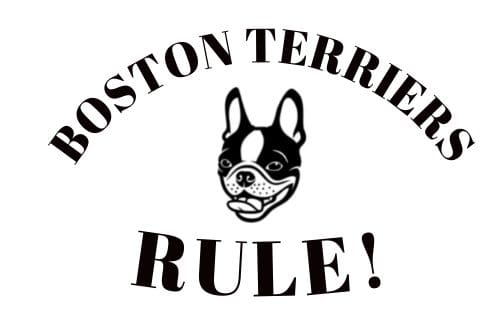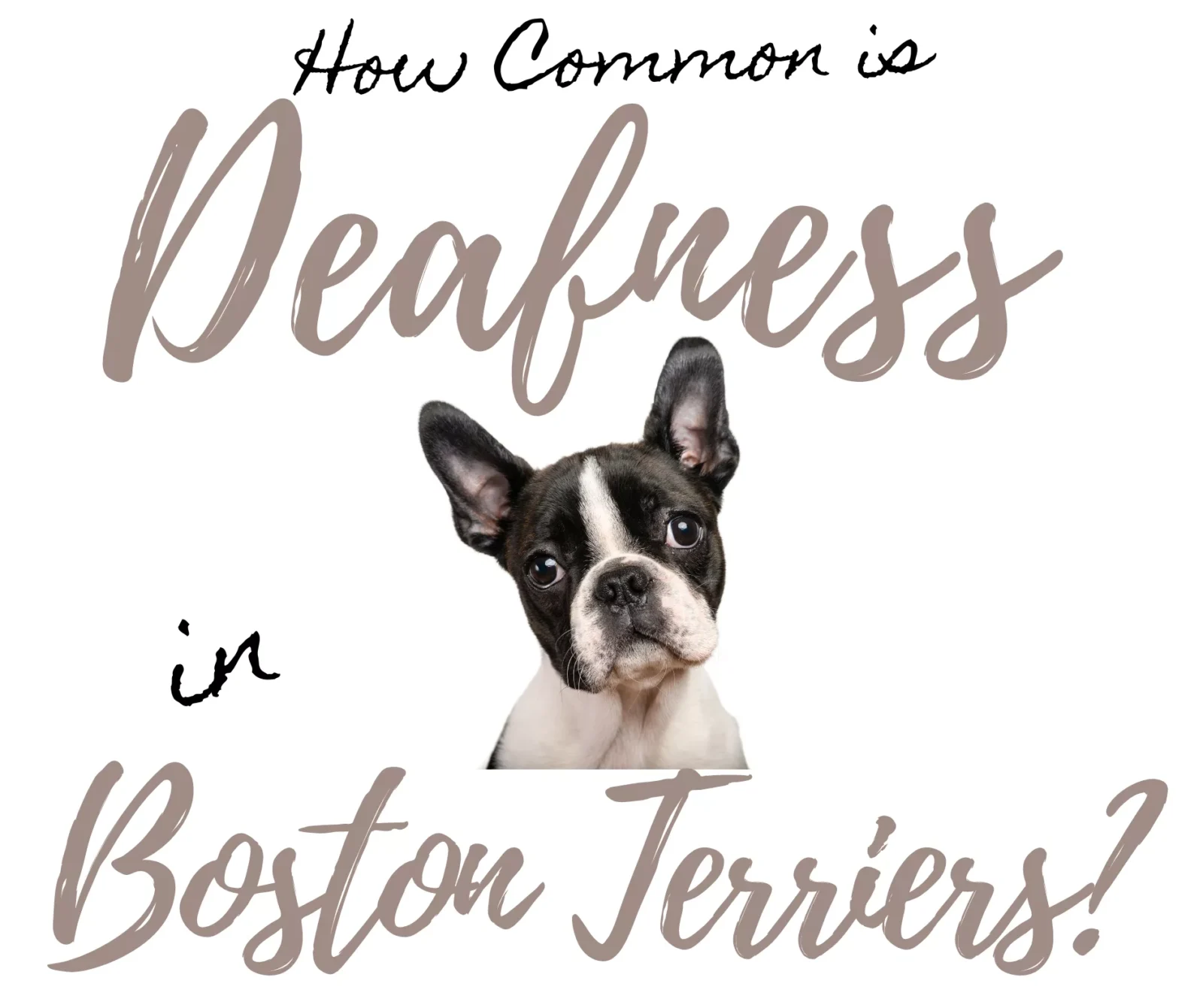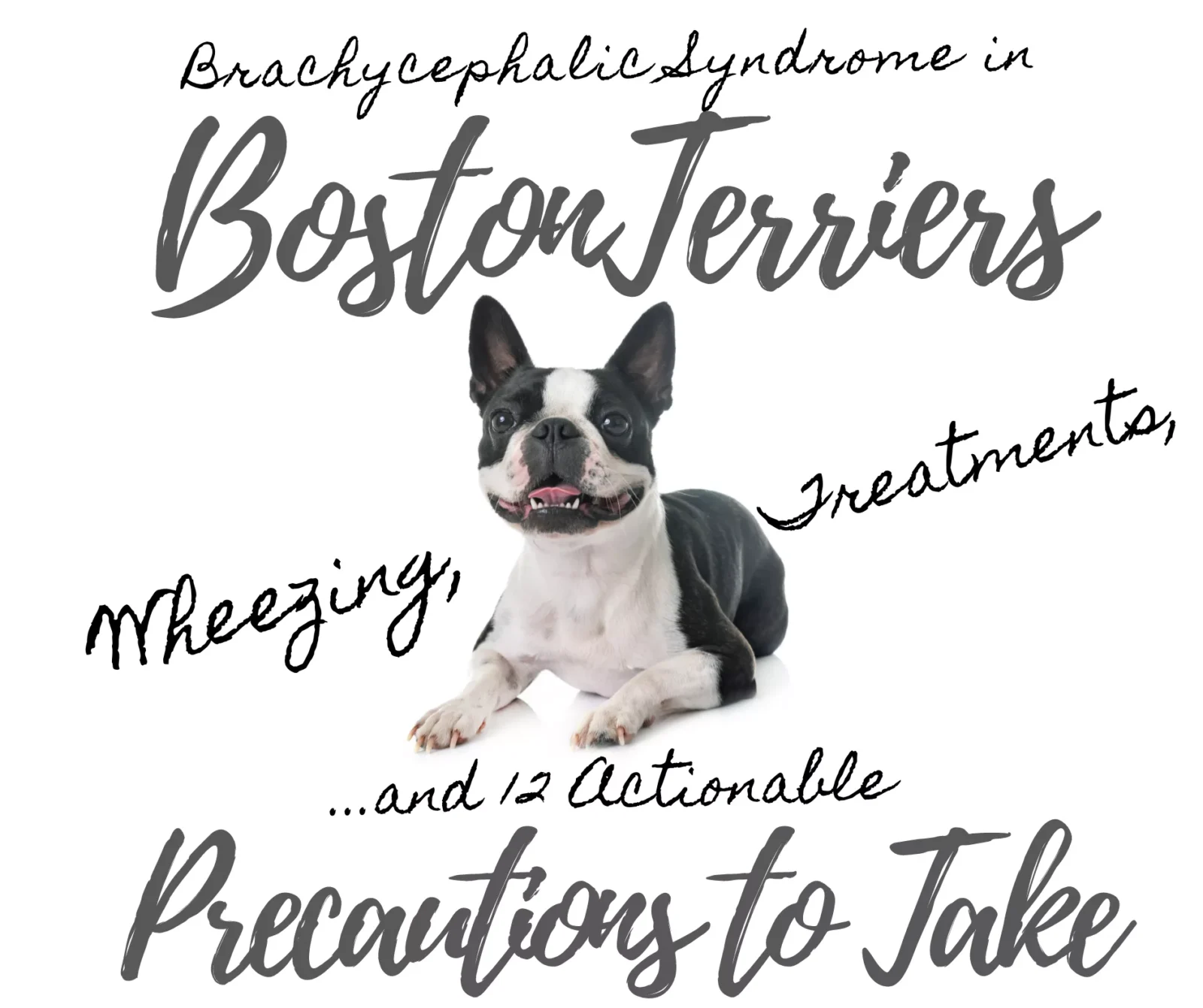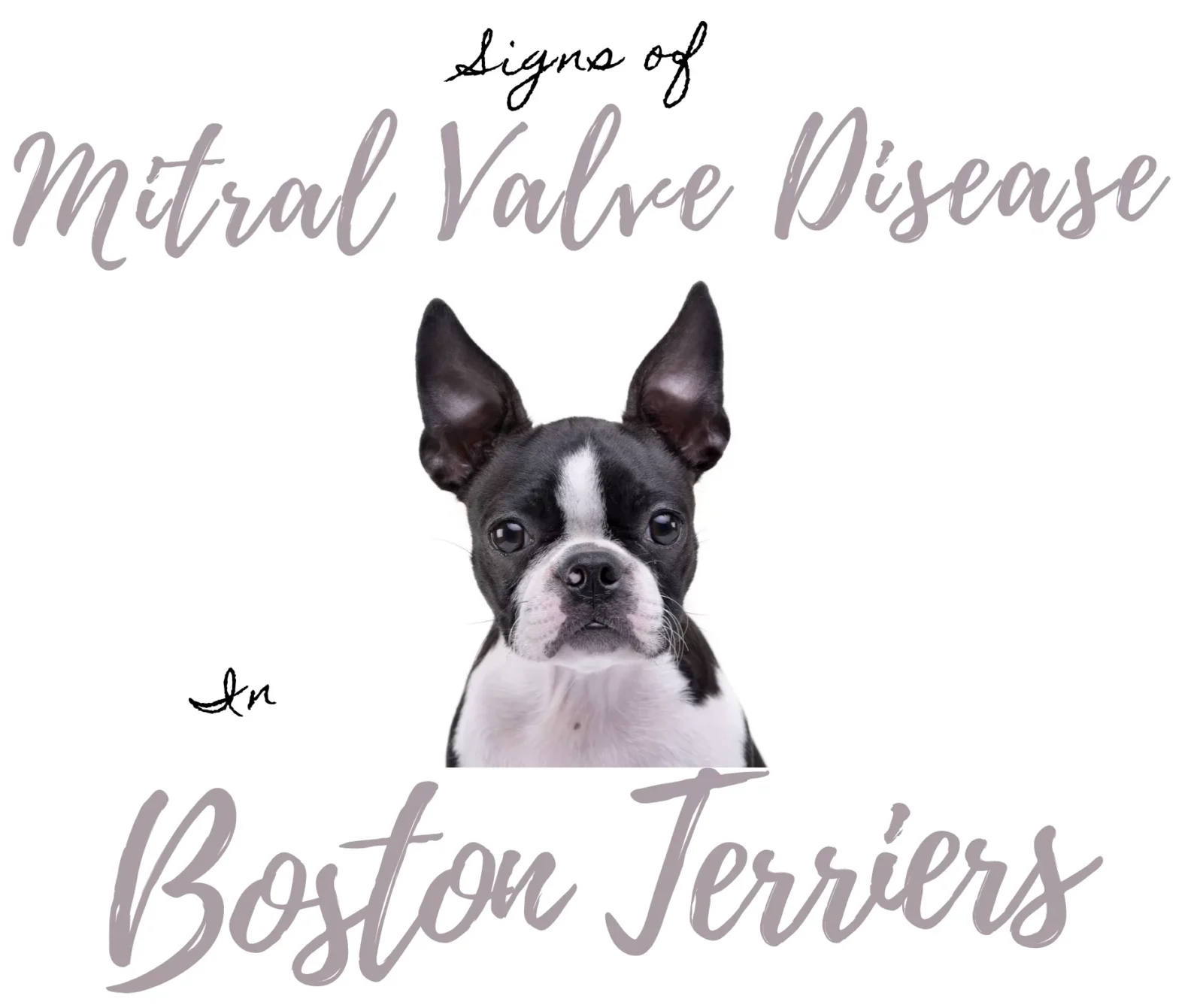What’s Behind Those Stains? Are Tear Stains a Worry for Your Boston Terrier?
If you’re the owner of a Boston Terrier, you’ve likely been captivated by their endearing looks. However, one issue that can occasionally mar their dapper appearance is tear stains. Those reddish-brown streaks around their eyes can be frustrating to deal with, however I have some proven solutions!
In this article, I’ll explain into the reasons behind tear stains in Boston Terriers and provide you with effective tips to prevent and remove them, so your beloved pup can shine brighter than ever.

Why Do Tear Stains Happen?
Tear staining, medically known as epiphora, the medical definition for having excess tears or watery eyes. It’s caused by eyes producing too many tears, or the tears in eyes not draining away as they should, and is a common issue in many dog breeds, including Boston Terriers. It occurs when excessive tearing leads to the accumulation of moisture and bacteria in the fur around the eyes.
The actual staining is caused by porphyrin–a reddish-brown pigment found in tears. Porphyrin is produced as iron is broken down within the body. This molecule is excreted through many different avenues, including the intestines, saliva, urine, and–tears!

Several factors contribute to tear staining in Boston Terriers:
Genetics: Genetics play a significant role in tear staining. Some Boston Terriers are more prone to excessive tearing due to the shape of their face and eye structure. Those adorable round eyes can sometimes trap tears and cause staining.
While these charming dogs are renowned for their distinctive appearance, it’s essential to recognize that their cute, round eyes, one of their most endearing features, can sometimes contribute to this issue. The shape of their face and the structure of their eyes can make them more prone to excessive tearing.
The conformation of their facial structure can create a shallow eye socket, which in turn affects the tear drainage system. This results in an insufficient drainage of tears, leading to their accumulation, and eventually, staining.
It’s crucial for Boston Terrier owners to understand that this propensity is rooted in genetics and not something that can be completely prevented. While responsible breeding practices aim to minimize these issues, it’s a characteristic inherent to the breed. This doesn’t mean that Boston Terrier owners are powerless in addressing tear staining; there are several steps that can be taken to manage and reduce it.
One of the first measures is to maintain proper hygiene around the eyes. Regular cleaning with a veterinarian-approved solution and soft cloth can help prevent tear staining from becoming more pronounced. Additionally, dietary choices can play a role, as certain foods may exacerbate tear staining. It’s often recommended to consult with a veterinarian to determine if dietary adjustments are necessary.
Genetic predisposition to tear staining is a consideration for Boston Terrier owners, but it’s not an insurmountable challenge. By being proactive in terms of eye care, hygiene, and dietary choices, pet parents can minimize the impact of genetics on tear staining, keeping their beloved companions comfortable and looking their best.
Blocked Tear Ducts: Some Boston Terriers might have partially blocked tear ducts, preventing proper drainage of tears and leading to their overflow onto the face.
Blocked tear ducts can be another factor contributing to the issue of tear staining in some Boston Terriers. While genetics often play a role in the conformation of the tear ducts, some dogs may be prone to partially blocked tear ducts, which can hinder the proper drainage of tears, leading to overflow and staining.
In Boston Terriers, the tear ducts are responsible for carrying excess tears away from the eyes and down into the nasal cavity, where they are reabsorbed or evaporate. However, in some cases, the tear ducts can become partially obstructed, impeding this essential drainage process.
The partial blockage may be due to a variety of factors, including congenital anomalies, infections, or even foreign bodies. While not all Boston Terriers will experience blocked tear ducts, those that do may exhibit symptoms such as excessive tearing, discharge from the eyes, and, subsequently, tear staining.
Addressing blocked tear ducts in Boston Terriers may require veterinary intervention. Veterinarians can perform tests to determine the exact cause of the blockage and recommend appropriate treatment options. These may include medication to address infections, flushing the ducts to remove obstructions, or in some cases, surgical intervention to correct structural issues.
As with any health concern in pets, early detection and timely treatment are crucial in managing blocked tear ducts and associated tear staining. Boston Terrier owners should stay vigilant and consult with their veterinarians if they notice any persistent eye issues to ensure the comfort and well-being of their pups. While genetics and anatomy play a role in this concern, appropriate care can help minimize its impact on these lovable dogs.
Irritants: Allergies, environmental irritants, and certain foods can trigger excessive tearing, further exacerbating the issue of tear stains.
Irritants, both environmental and dietary, can significantly contribute to the problem of tear staining in Boston Terriers. These irritants can trigger excessive tearing, making the issue of tear stains even more pronounced. It’s important for Boston Terrier owners to recognize the role of these irritants and take steps to manage and minimize their effects.
- Allergies: Boston Terriers, like many other dog breeds, can be sensitive to allergens in their environment. Common allergens include pollen, dust mites, mold, and certain cleaning products. When exposed to allergens, dogs may experience allergic reactions, including excessive tearing. Identifying and minimizing your pet’s exposure to these allergens can help reduce tearing and staining.
- Environmental Irritants: Factors in the environment can also play a role in tear staining. Smoke, pollution, and strong odors can irritate a dog’s eyes, leading to increased tear production. Ensuring good ventilation in your home and minimizing your pet’s exposure to smoky or polluted areas can help mitigate these irritants.
- Dietary Factors: The food your Boston Terrier consumes can also impact tear staining. Certain ingredients or additives in commercial dog food may trigger allergies or sensitivities, leading to increased tearing. It’s advisable to consult with your veterinarian to determine if dietary adjustments can help reduce tear staining. Switching to a high-quality, hypoallergenic dog food may be recommended.
- Water Quality: The quality of your dog’s drinking water can be a contributing factor. If the water is high in minerals or contains impurities, it can lead to tear staining. Providing clean, filtered water can help mitigate this issue.
- Grooming and Cleaning: Regular grooming and cleaning around the eyes can also be helpful in managing tear staining. Using a veterinarian-approved cleaning solution to gently wipe the area around the eyes can prevent the buildup of tear stains.
In summary, while genetics and blocked tear ducts can be underlying factors in tear staining, understanding the role of irritants is essential for Boston Terrier owners. By addressing allergies, environmental factors, and dietary considerations, pet parents can take proactive steps to reduce excessive tearing and minimize the appearance of tear stains. Consultation with a veterinarian can provide valuable guidance on identifying and managing these irritants for the well-being of your furry companion.

7 Proven Solutions for Tear Stains:
Now that we understand why tear stains happen, let’s explore some practical solutions to prevent and remove those unsightly marks from your Boston Terrier’s face.
1. Maintain Good Hygiene: Regularly cleaning your Boston Terrier’s face is essential. Use a clean, damp cloth to gently wipe away any accumulated tear stains. Remember to be gentle and avoid getting water in their eyes.
2. Water Quality Matters: Surprisingly, the type of water your dog drinks can impact tear staining. Hard water with high mineral content might contribute to tear stains. Consider using filtered or distilled water for drinking and cleaning their face.
3. Diet and Nutrition: What your Boston Terrier eats can significantly affect tear staining. Some dogs might be sensitive to certain ingredients in their food, causing allergies and excessive tearing. Foods high in iron, like red meat, can cause staining. Consult your veterinarian for advice on selecting a balanced and high-quality diet suitable for your dog’s needs.
4. Antioxidant-Rich Foods: Foods rich in antioxidants, such as berries, carrots, and spinach, can promote eye health and reduce inflammation. Including these foods in your dog’s diet might help control tear staining.
5. Tear Stain Removal Products: There are various tear stain removal products available, such as wipes, powders, and liquid solutions. These products are formulated to gently and safely remove tear stains. However, always choose products that are specifically designed for dogs and consult your vet before use.
6. Regular Grooming: Keeping your Boston Terrier’s face clean and well-groomed can go a long way in preventing tear stains. Trim the hair around their eyes to minimize the chance of tear buildup.
7. Tear Duct Massage: Gently massaging your dog’s tear duct area can help with tear drainage. Be cautious and gentle while performing this technique to avoid causing discomfort.

More Solutions for Tear Stain Removal
Hydrogen Peroxide and water: Make a solution of 1 part 3% peroxide and 10 parts water. Dip a cotton ball in the solution and wipe carefully around the eyes making swiping motions away from your Boston’s eyes.
Supplement Your Boston Terrier’s Food: Besides cutting back or eliminating red meat, supplementation may also be necessary. NaturVet – Tear Stain Plus Lutein will provide nutrients for your dog’s eyes from the inside out. It also helps lubricate eyes to help prevent the watering to begin with. Give daily until the discoloration stops, then continue for another 30 days. After that, stop and administer when needed. The 70 chew pack should last a Boston Terrier owner 30-45 days.
Eye Wipes: The Miracle Care Eye Wash Pads For Dogs get high ratings for it’s effectiveness and convenience. Your Boston may also respond better to this then when they see you coming with a wash cloth. Just use daily, one pad for each eye, until the stains disappear.
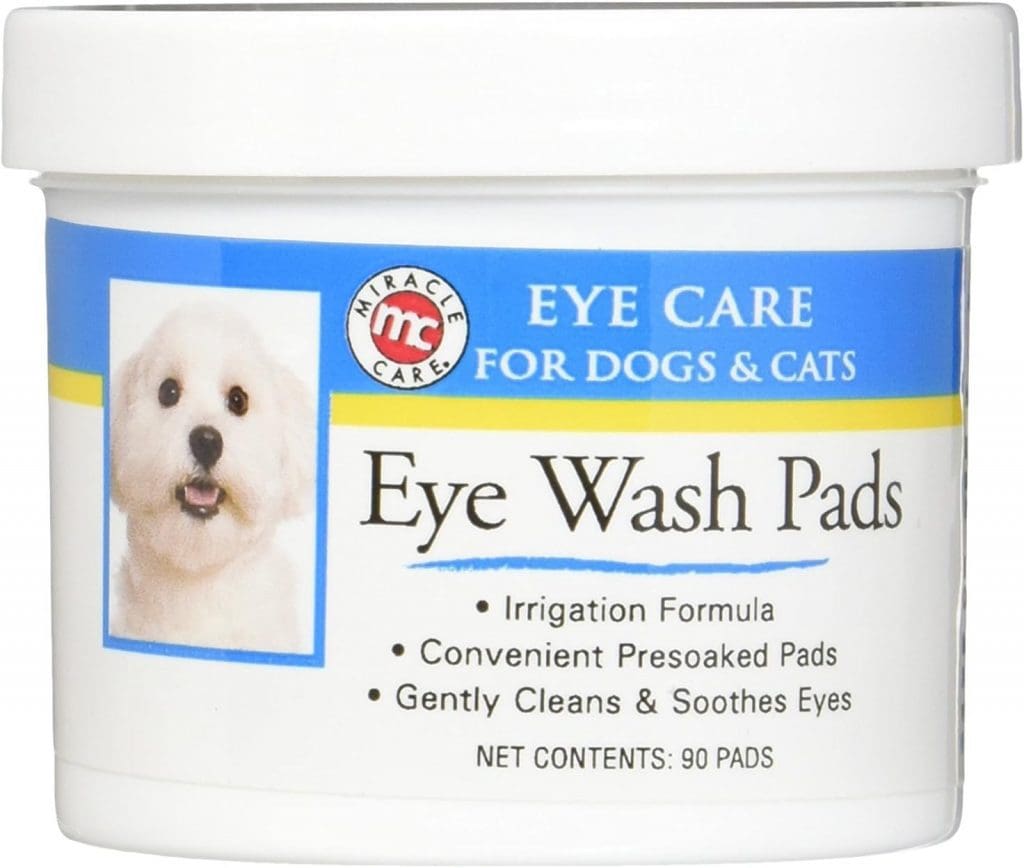
Now that we’ve got the stains on the run, what else can we do to prevent them from coming back? Angels’ Eyes Natural Tear Stain Prevention Powder is great for maintenance. Just sprinkle over food. It is filled with key ingredients to help keep eye inflammation down, which in turn should stop the watering.

Tear Stain Removal Kit: If you really want to go all out, Eye Envy Dog Tear Stain Remover Starter Kit with ProPowder Brush is the ticket! It’s a little pricey, but should last for quite a while. Safely remove tear stains with non-irritating and 100% natural ingredients including Colloidal Silver. Remove tear stains in 7 days with daily use. The scent is divine and this products gets high ratings for ease of use.
Can Your Boston Terrier Bid Farewell to Tear Stains?
Tear stains on Boston Terriers are a common concern, but armed with the right information and strategies, you can keep those reddish-brown marks at bay. By understanding the causes of tear stains and implementing a combination of proper hygiene, water quality management, dietary adjustments, and the use of tear stain removal products, you can help your furry friend regain their clear-eyed charm.
Are you ready to say goodbye to tear stains and hello to a happier, healthier Boston Terrier? Share your experiences and tips on managing tear stains with fellow Boston Terrier owners! Let’s keep our pups looking their best and ensure they continue to steal hearts with their adorable faces.

Sources:
- https://www.akc.org/expert-advice/health/causes-of-tear-stains/
- https://www.hillspet.com/dog-care/healthcare/eye-stains-in-dogs
- https://pets.webmd.com/dogs/dog-tear-stains#1
- https://vcahospitals.com/know-your-pet/tear-staining-in-dogs
- https://www.aspca.org/pet-care/dog-care/common-dog-eye-problems
This post contains affiliate links. I earn from qualifying Amazon purchases.
